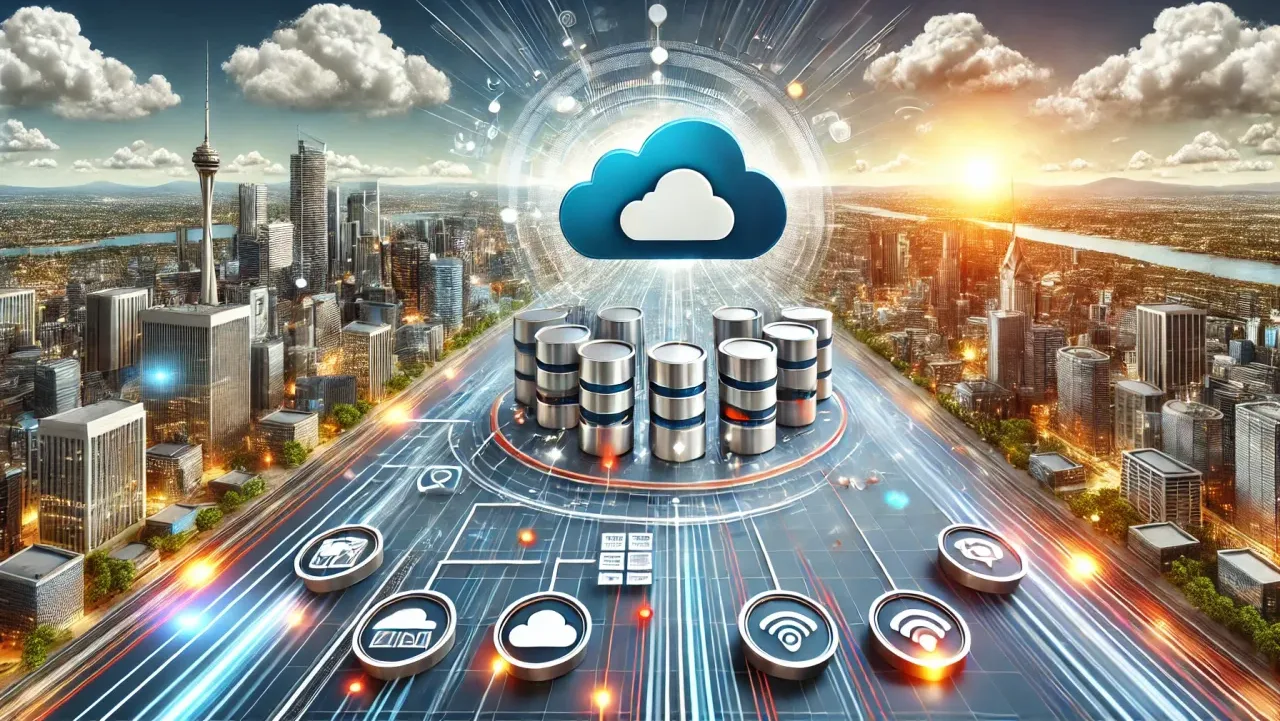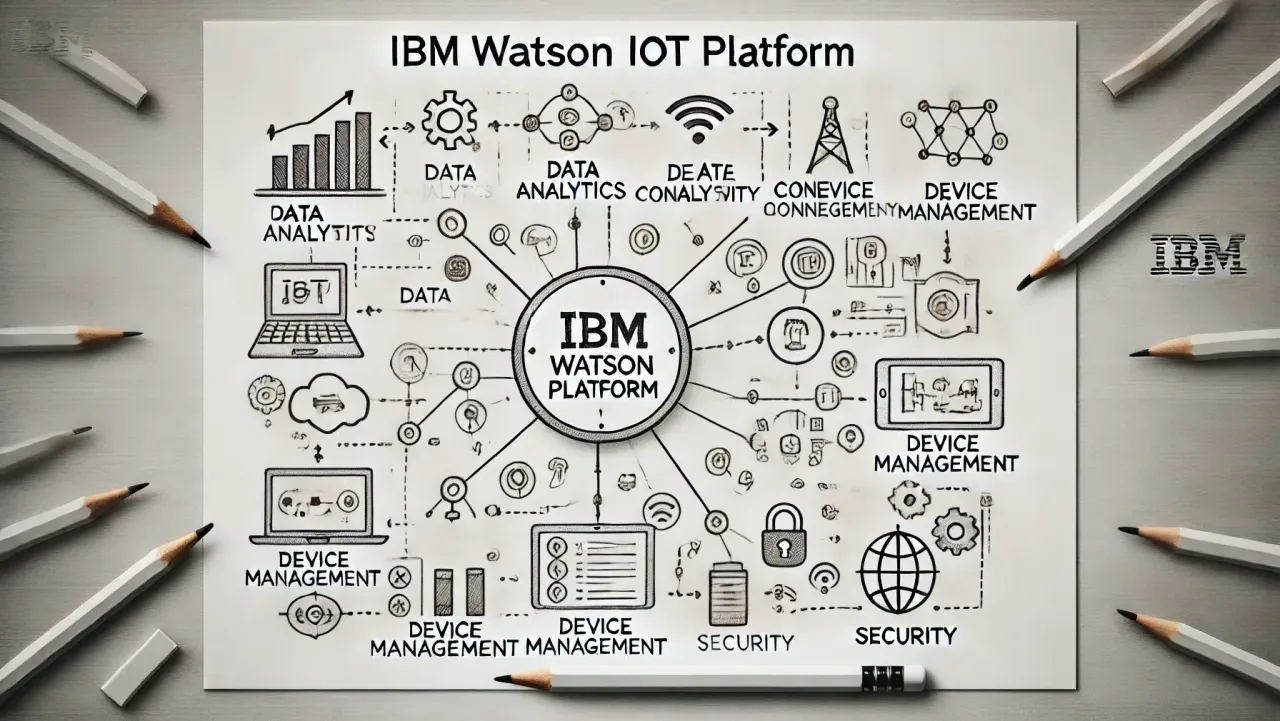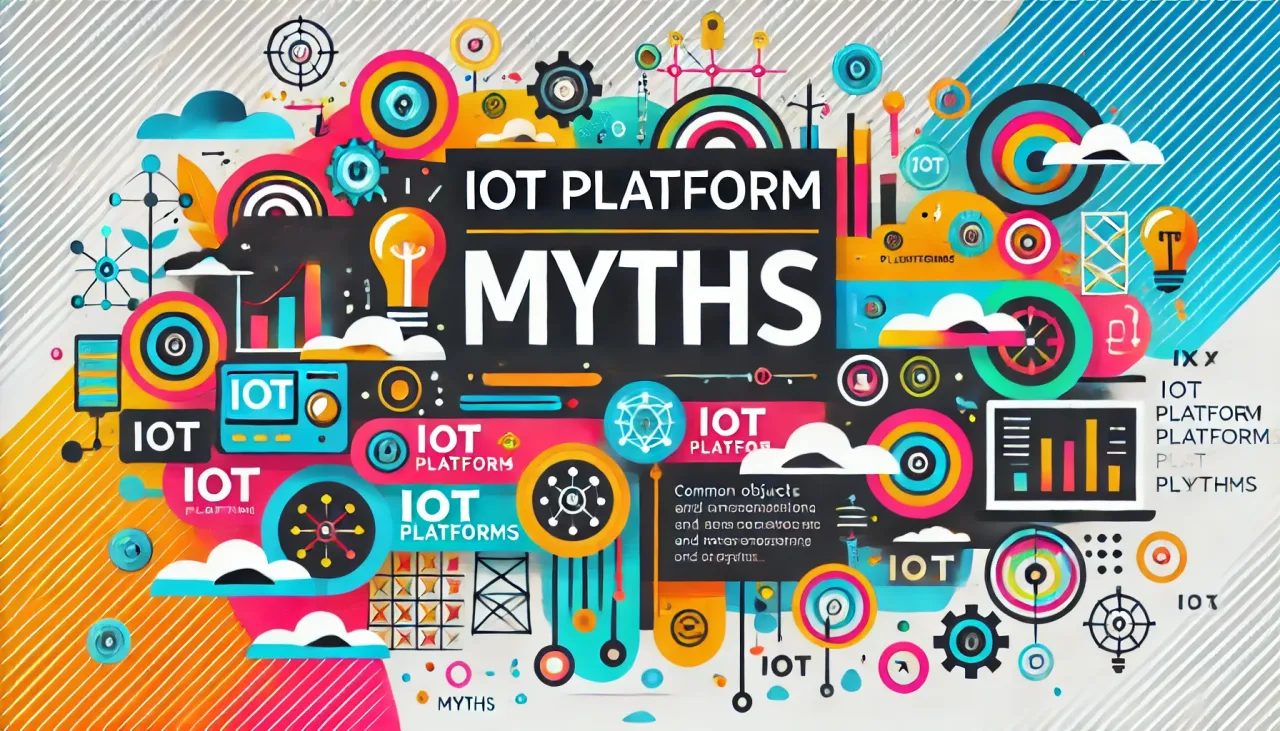In this Article
Introduction to IoT Platform Myths
The Internet of Things (IoT) has become a critical component of modern technology, driving innovation and efficiency across various industries. At the core of IoT ecosystems are IoT platforms, which provide the essential infrastructure and tools for managing connected devices, data, and applications. Despite their importance, there are many misconceptions about what constitutes an IoT platform. This article aims to debunk common IoT platform myths and clarify the true nature of IoT platforms, helping businesses make informed decisions about their IoT strategies.
Understanding IoT Platforms
Definition of IoT Platforms
An IoT platform is a suite of integrated software and hardware solutions designed to manage and facilitate the communication, data collection, and analysis of connected devices within an IoT ecosystem. These platforms provide the necessary tools and infrastructure to connect, manage, and analyze data from IoT devices, enabling seamless communication and data flow.
Key Components of IoT Platforms
- Device Management: Tools for onboarding, configuring, monitoring, and maintaining IoT devices.
- Data Management: Capabilities for collecting, storing, processing, and analyzing data generated by IoT devices.
- Connectivity: Ensuring reliable and secure communication between devices and the cloud.
- Security: Implementing robust security measures to protect data and devices.
- Application Enablement: Providing APIs and SDKs to develop and deploy IoT applications.
Common IoT Platform Myths
Myth 1: Any Cloud Service is an IoT Platform
One of the most prevalent myths is that any cloud service qualifies as an IoT platform. While cloud services are integral to IoT platforms, not all cloud services meet the criteria. An IoT platform must provide specific functionalities tailored to IoT needs, such as device management, data analytics, and real-time processing. Generic cloud services that offer storage or compute power alone do not meet the criteria of an IoT platform.
Myth 2: All IoT Platforms are the Same
There is a wide variety of IoT platforms, each designed to serve different purposes and industries. Some platforms are tailored for industrial IoT applications, focusing on robust security and scalability, while others might be optimized for consumer IoT applications, emphasizing ease of use and rapid deployment. Understanding these differences is crucial for selecting the right platform for your needs.
Myth 3: IoT Platforms Only Manage Devices
Managing devices is a crucial function of IoT platforms, but they offer much more. Comprehensive IoT platforms also provide data management, connectivity solutions, security features, and application development tools. They enable end-to-end solutions that cover the entire IoT ecosystem, from data collection and processing to analysis and visualization.
Myth 4: IoT Platforms are Too Complex for Small Businesses
While some IoT platforms are designed for large-scale deployments, many platforms cater to small and medium-sized businesses (SMBs). These platforms offer simplified interfaces, cost-effective solutions, and scalable options that grow with the business. SMBs can leverage IoT platforms to enhance operational efficiency and drive innovation without significant upfront investments.
Myth 5: IoT Platforms are Just Hype
IoT platforms have proven their value across various industries, driving significant advancements in efficiency, productivity, and innovation. From smart cities and healthcare to manufacturing and agriculture, IoT platforms are being utilized to solve real-world problems and create new business opportunities.
What is Not an IoT Platform?
Traditional Cloud Services

Ai Image by Dall-E
As mentioned earlier, traditional cloud services such as Amazon S3 or Google Cloud Storage provide essential functionalities for storing and processing data. However, they lack the specific features required for managing IoT devices, ensuring secure communication, and analyzing real-time data. Therefore, while they are crucial components of an IoT ecosystem, they do not qualify as IoT platforms on their own.
Real-World Examples of IoT Platforms
To further illustrate what constitutes an IoT platform, let’s explore some real-world examples of leading IoT platforms and their key features.
1. AWS IoT Core
Overview of AWS IoT Core
AWS IoT Core is a managed cloud platform that allows connected devices to interact with cloud applications and other devices easily and securely. It supports billions of devices and trillions of messages, ensuring reliable and scalable connectivity.
Key Features of AWS IoT Core
- Device Management: AWS IoT Device Management makes it easy to onboard, organize, monitor, and remotely manage IoT devices at scale.
- Secure Communication: AWS IoT Core ensures secure communication between devices and the cloud through TLS and mutual authentication.
- Real-Time Data Processing: AWS IoT Analytics enables real-time analysis of IoT data for actionable insights.
Use Cases for AWS IoT Core
- Smart Homes: Managing and controlling smart home devices such as thermostats, lighting systems, and security cameras.
- Industrial IoT: Monitoring and managing industrial equipment to improve operational efficiency and reduce downtime.
- Healthcare: Enabling remote patient monitoring and telehealth services to improve healthcare delivery.
2. Microsoft Azure IoT Hub
Overview of Microsoft Azure IoT Hub
Microsoft Azure IoT Hub is a cloud platform that enables bi-directional communication between IoT applications and the devices they manage. It offers extensive security features and integration with other Azure services.
Key Features of Microsoft Azure IoT Hub
- Device Provisioning: Azure IoT Hub Device Provisioning Service simplifies the process of connecting and configuring devices securely.
- Edge Computing: Azure IoT Edge allows data processing and analytics at the edge, reducing latency and bandwidth usage.
- Integration: Seamless integration with other Azure services like Azure Machine Learning, Azure Functions, and Azure Stream Analytics.
Use Cases for Microsoft Azure IoT Hub
- Smart Cities: Implementing smart city solutions such as traffic management, waste management, and energy monitoring.
- Retail: Enhancing customer experiences through smart shelves, personalized offers, and inventory management.
3. Google Cloud IoT Core
Overview of Google Cloud IoT Core
Google Cloud IoT Core is a fully managed service that allows you to connect, manage, and ingest data from globally dispersed devices. It integrates with Google Cloud’s data analytics services to provide comprehensive IoT solutions.
Key Features of Google Cloud IoT Core
- Device Management: Supports large-scale device deployment and management with minimal effort.
- Real-Time Data Analysis: Integration with Google Cloud Pub/Sub, Dataflow, and BigQuery for real-time data analysis.
- Security: Ensures device security through mutual authentication and secure communication.
Use Cases for Google Cloud IoT Core
- Agriculture: Implementing precision agriculture techniques to optimize crop yields and resource usage.
- Healthcare: Enhancing patient care through remote monitoring and health data analytics.
- Manufacturing: Streamlining manufacturing processes through predictive maintenance and real-time monitoring.
4. IBM Watson IoT Platform
Overview of IBM Watson IoT Platform

Ai Image by Dall-E
IBM Watson IoT Platform provides powerful capabilities for device management, data collection, and real-time analytics. It leverages IBM’s cognitive computing and machine learning technologies to offer advanced IoT solutions.
Key Features of IBM Watson IoT Platform
- AI and Machine Learning: Integrates with IBM Watson services to provide AI-driven insights and automation.
- Device Connectivity: Supports a wide range of communication protocols for device connectivity.
- Advanced Analytics: Real-time analytics and visualization tools for monitoring and managing IoT data.
Use Cases for IBM Watson IoT Platform
- Manufacturing: Enhancing manufacturing processes through predictive maintenance and quality control.
- Energy Management: Optimizing energy consumption and distribution in smart grids and buildings.
- Transportation: Improving fleet management and logistics through real-time tracking and route optimization.
5. Oracle IoT Cloud
Overview of Oracle IoT Cloud
Oracle IoT Cloud offers a comprehensive suite of IoT applications and tools for device connectivity, data analysis, and application development. It provides a robust platform for building and deploying IoT solutions.
Key Features of Oracle IoT Cloud
- Application Development: Integrated development environment for building custom IoT applications.
- Predictive Analytics: Advanced analytics capabilities for predicting equipment failures and optimizing operations.
- Integration: Seamless integration with Oracle’s enterprise applications and databases.
Use Cases for Oracle IoT Cloud
- Logistics and Transportation: Improving fleet management and logistics through real-time tracking and route optimization.
- Smart Agriculture: Monitoring and managing agricultural operations to increase efficiency and productivity.
- Retail: Enhancing retail operations through smart inventory management and customer insights.
6. Minnovation IoT Platform
Overview of Minnovation IoT Platform
Minnovation provides comprehensive IoT solutions tailored to business needs. Their platform ensures seamless integration, robust security, and enhanced performance.
Key Features of Minnovation IoT Platform
- Custom Solutions: Tailored IoT solutions to fit specific business requirements.
- Robust Security: Advanced security features to protect data and devices.
- Scalable Architecture: Supports growing IoT networks.
Use Cases for Minnovation IoT Platform
- Smart Cities: Implementing smart lighting, waste management, and traffic control solutions.
- Industrial IoT: Enhancing operations through predictive maintenance, remote monitoring, and process optimization.
- Healthcare: Providing advanced healthcare solutions through connected devices and remote monitoring.
Conclusion
Selecting the right IoT platform is essential for optimizing IoT deployments and achieving business objectives. Understanding the common IoT platform myths helps in making informed decisions. By recognizing what constitutes an IoT platform and what does not, businesses can better navigate the complex landscape of IoT solutions and leverage the right tools to drive innovation and efficiency.
How We Can Help
At Minnovation, we specialize in providing comprehensive IoT solutions tailored to meet the unique needs of your business. Our expertise in various IoT platforms ensures seamless integration, robust security, and enhanced performance. We offer consultation, development, and management services to help you harness the full potential of IoT technology. Whether you are looking to implement a new IoT system or optimize your existing infrastructure, our team is here to support you every step of the way. For more details please visit out site or Contact us.
Reference
Related Blog Posts
How Smart Cities Connect: Getting Started with Edge AI and IoT Technology
How to Get Started with Edge AI and IoT Technologies in Smart Cities: Overcoming Integration Challenges In recent years, the concept of smart cities has evolved from a futuristic Read More
5 Step Strategy: Ensuring Security and Privacy in 15-Minute Smart Cities
Introduction Ensuring security and privacy in 15-minute smart cities is a critical challenge as urban areas become increasingly connected through IoT and edge AI technologies. These cities aim to Read More
What is a smart city and the challenge of legacy systems
How to Get Started with Integrating Legacy Systems in Smart Cities Smart cities are transforming urban landscapes by leveraging technology to improve the quality of life for residents. However, Read More




